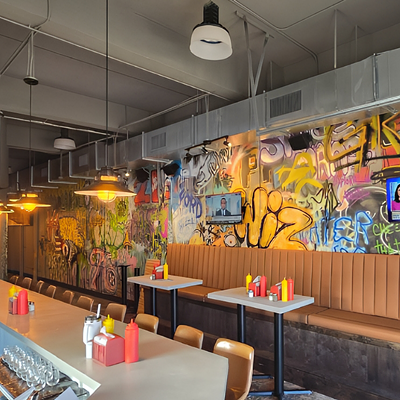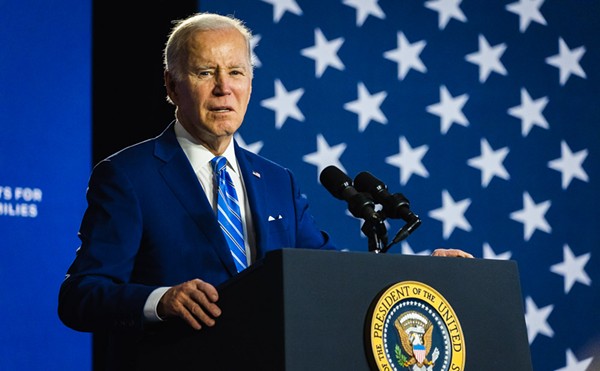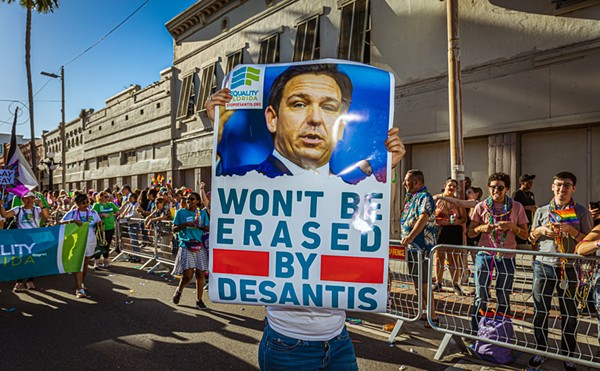"We can't pay market rate," Whipple said, "but we can bring a lot of energy to it."
In the end, he said, Jason offered a lower rent, but still not cheap enough to work for the arts groups — even though these tenants were willing to maintain the aging structure and bring some life to downtown.
Whipple is careful not to paint Jason as a villain, pointing out that she has had arts tenants in her buildings before. "She's very nice," he said. "I like her. I applaud her for trying."
Jason has bigger plans for the site: a 44-story condo tower at the former W.T. Grant five-and-dime store, part of a larger vision for her company to develop two other condo towers on Franklin Street, called the Kress Block.
Whipple is generous in his assessment of Jason's company, something that others downtown privately are not. They complain that the Jason-owned blocks and other buildings — notably the historic Maas Bros. department store site — have sat vacant for decades.
Jeannette Jason did not respond to several requests for an interview for this story.
Should property owners give away free space for the arts? It's an idea that seems antithetical to capitalism. Why should landowners subsidize, in effect, any industry or sector of our economy? Why should government, either, for that matter?
Some economists — Richard Florida in his Rise of the Creative Class foremost among them — argue that they should because the arts provide a diversity that attracts many other industries and fuels a strong 21st-century economy.
The theory has many proponents among Tampa's government and nonprofit leadership.
"The arts and cultural institutions are obviously beneficial for the kind of economic redevelopment and downtown revitalization that we are talking about," said Melinda Chavez, executive director of the Tampa Bay Business Committee for the Arts.
But the building owners have compelling reasons not to install artists in their vacant buildings. Many of the properties have not generated any revenue for decades. Many were built in the 1920s-1940s and would need extensive refitting, in the hundreds of thousands of dollars, to make them habitable. Some landlords have had arts groups as tenants before and found them unstable and difficult to work with.
Then there is the matter of downtown Tampa's zoning, which pretty much allows a skyscraper on every block. With the idea that a big hit is just a few years away, some landowners over the decades were willing to let their properties idle while they waited for the next wave of tower construction.
Take the Maas Bros. building, as an example. Once considered among the greatest shopping meccas in Florida, the creation of two German brothers was a fixture on Franklin Street for more than 80 years. Today, the building is considered a hazard and a public nuisance. The city's top code enforcement official earlier this year said the building is so unsafe that firefighters will not enter it — even if it's burning down.
With its 60,000 square feet, the Maas Bros. building could have been a great arts building — historic and funky, creative and open.
Instead, it was slated for demolition as part of a multi-block office tower proposed several years ago by Greg Hughes and Chesapeake Atlantic Holdings. It continued to sit vacant, along with other parcels, until Hughes' plans failed to attract a lead tenant and he sold the properties that had not already been lost to foreclosure. The Maas has a new owner — Pradip Patel — and an uncertain future.
And it's not just the arts that have this problem downtown. Shop owners suffer as well. A study done earlier this year for the Tampa Downtown Partnership said many good, desirable retailers "simply cannot afford to pay market rate rents for space," and many "older downtown buildings are owned by trusts, heirs, and others who are simply not motivated, or able, to renovate their buildings."
"It doesn't have to be a city of galleries," said Ellen Brown, owner of Old Tampa Book Company on Tampa Street. Brown ran an arts gallery for 24 years in Rochester, N.Y., before moving to Tampa with her husband, David, and opening the rare books store in 1994. "I know how hard it is to run a gallery."
Brown sees cultural organizations and businesses as just one part of a healthy mix of unique, locally owned shops and restaurants — and even a crafts community — vital to making Tampa's downtown special and affordable on many levels, for shopkeeper and customer alike. "A destination is what we're talking about," Brown said. "If they turn downtown into Generica, why would anyone come to downtown and pay for parking? I don't want to work in a mall."
But Generica seems to be exactly what we're in for. The trend in condo construction in downtown Tampa seems likely to spawn a national brand-oriented mix of retail and restaurants in downtown Tampa. As these new towers go up, most have some provision for retail space on the ground level, but those spaces will almost certainly rent at high market rates, making them unavailable to locally owned retailers — and, of course, artists.















